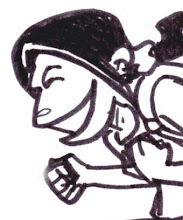
Born Irish in 1952, Gary Moore, the talented, blues singer and guitarist formed his first major band, Skid Row, when he was 16. years old - initially with Phil Lynott, who left after a few months to form Thin Lizzy. Skid Row continued as a three-piece, with Brendan Shiels (bass) and Noel Bridgeman (drums). They relocated from Belfast to London in 1970 and signed a contract with CBS Records. After just two albums Skid Row disbanded, leaving Moore to form the Gary Moore Band. Their first album, Grinding Stone, came out in 1973, but work stopped the following year while Moore helped out Thin Lizzy after guitarist Eric Bell had left the band. This stint lasted just four months before Moore was replaced by Scott Gorham and Brian Robertson. Gary delivered some session work before joining Colosseum II in 1976. He made three albums with them, and also rejoined Thin Lizzy for a 10-week American tour in 1977 after guitarist Brian Robertson suffered a severed artery in his hand. Moore finally became a full-time member of Thin Lizzy in 1978, working on the band's Black Rose album. At the same time he completed the solo set Back On The Streets.
Moore left Thin Lizzy in July 1979, half-way through a US tour. He formed the hard rock band G-Force, which struggled with record sales. Moore then resumed his solo career, recording a series of commercially ignored albums until he achieved another UK Top 10 single in June 1985 with "Out In The Fields", another collaboration with Lynott. The hard-rocking Wild Frontier broke into the UK Top 10 in 1987. The 1989 set After The War revealed a strong Celtic influence, and also featured guest artists such as Ozzy Osbourne and Andrew Eldritch (Sisters Of Mercy). His breakthrough to worldwide commercial acceptance came in 1990 with Still Got The Blues, which featured superb guitar work and confident vocals. Mixing blues standards and originals, Moore was acclaimed as one of the UK's foremost artists, a stature that the release of After Hours - featuring cameo appearances from B.B. King and Albert Collins - only confirmed. Both this album and the follow-up live set, Blues Alive, reached the UK Top 10.
In 1994 Moore collaborated with Jack Bruce and Ginger Baker as BBM, releasing an accomplished and satisfying album, but personality conflicts meant that the trio was short-lived. In 1995 he released the excellent Blues For Greeny, an album of songs written by Peter Green and played on Green's Gibson Les Paul guitar, which had been a gift from Green to Moore many years earlier. Dark Days In Paradise had little blues on offer. Just as his followers were becoming used to his recent style, Moore attempted rock, AOR and pop. The album's lukewarm success no doubt reflected their rejection of his new approach. A Different Beat used dance rhythms over regular rock structures, but although Moore's guitar playing was as sharp and fluid as ever, lyrically the songs were anemic. To the great relief of many of his fans, he returned to his roots on the aptly-titled Back To The Blues.
Gary Moore has evolved from 80s metal/arena rocker to blues hound. And he's got the chops to pull it off. The former Thin Lizzy guitarist is in true blues form. Rhythm and riffs are fairly easy while some of the lead work will take some time to learn. Gary's instructional materials are superb.
